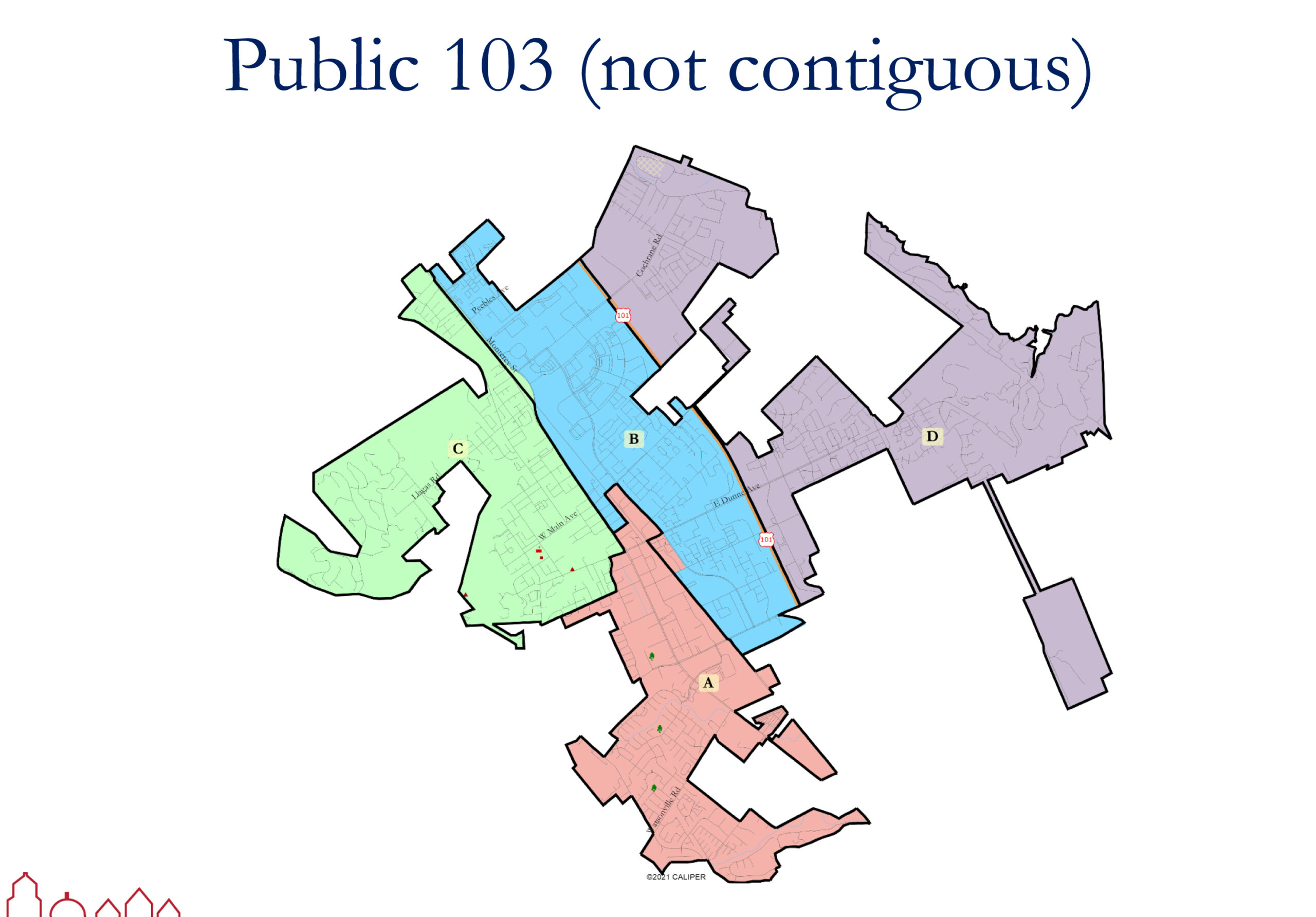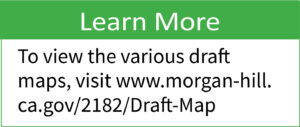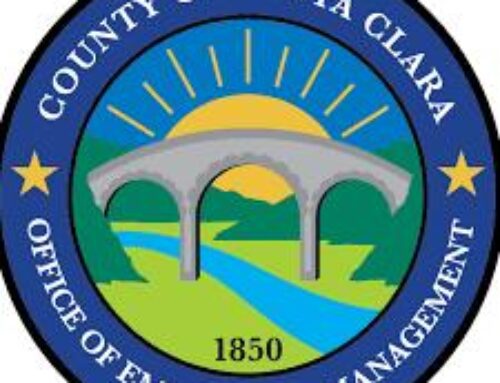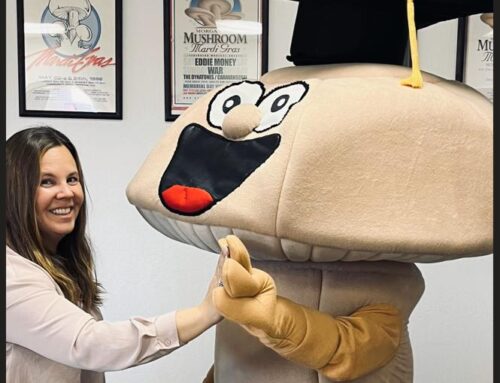By law, city must make final decision by April 17
![]()

Map 103 is not contiguous, possibly posing a legal challenge for the city of Morgan Hill if it is adopted. Photo courtesy City of Morgan Hill
By Marty Cheek
After eight months of community engagement, the clock is ticking on the important decision of deciding the boundaries of the four city council districts. City officials and staff narrowed down the selection to six draft maps at a Feb. 16 virtual workshop.
 By state law, the city has a deadline of April 17 to submit a final district map to the Santa Clara County Registrar of Voters. This map will apply to the November general election. Councilmembers will discuss at the March 2 meeting the pros and cons of the six maps and vote on the final map on that date. By law, the final map must be adopted with no more than one dissenter.
By state law, the city has a deadline of April 17 to submit a final district map to the Santa Clara County Registrar of Voters. This map will apply to the November general election. Councilmembers will discuss at the March 2 meeting the pros and cons of the six maps and vote on the final map on that date. By law, the final map must be adopted with no more than one dissenter.
“It’s uncertain whether the city council will make a decision March 2 because they are bringing so many maps back,” said City Clerk Michelle Bigelow. “They’ll probably have more discussion on that night and come back March 16 and narrow it down to one or two maps and make a decision and adopt the map then.”
All submitted draft maps are available for public review on the city’s redistricting webpage www.morgan-hill.ca.gov/2182/Draft-Maps. Following discussion from community members at the February workshop, the council selected the maps 103, 104, 106, 108, and NDC Green. City staff added map 105 to the list.
Councilmember Yvonne Beltran-Martinez and several speakers pushed at the workshop for the selection of map 103, which they said best provides for the legal requirement of “communities of interest” for better representation of minority voters. Beltran-Martinez lives in District B and is up for election in November. If selected, Map 103 might cause a lawsuit for the city from the state or an attorney because it fails to follow the “contiguous” requirement. It divides District D, now represented by Councilmember John McKay into two non-attached sections.
There was debate at the workshop on what defined communities of interest. The workshop presentation document prepared by the consulting firm National Demographics Corporation (NDC) defined a community of interest as “a population that shares common social or economic interests that should be included within a single district for purposes of its effective and fair representation.” The presentation added: “Definitions of Communities of Interest may not include current district boundaries, relationships with political parties, incumbents, or political candidates.”
Resident Kathy Napoli encouraged the adoption of map 103 because she believes it best represents minorities in Morgan Hill, especially those in the Latino community.
“Map 103 would protect and preserve protected classes, existing communities of interest and would comply with the California Voting Rights Act’s intent and purpose of ensuring the ability of a protected class to elect a candidate of its choice or otherwise influence the outcome of an election,” she said in an email.
 Councilmember McKay, who is up for election in November, expressed concern about map 103 because it would divide voters in his district into two geographically noncontiguous sections, which violates California criteria for redistricting.
Councilmember McKay, who is up for election in November, expressed concern about map 103 because it would divide voters in his district into two geographically noncontiguous sections, which violates California criteria for redistricting.
“I fear the redistricting process could be influenced by individual political interests,” he said in an email. “We need to keep our eyes focused on what is best and fair for the majority of our community and meets the legal requirements of the redistricting process. So far we have not been provided with any identification of ‘communities of interest’ in the area receiving the greatest comments that are not so large and general that breaking them up would impact their needs”
 Every 10 years after the U.S. Census data is released, cities, counties, states and special districts are required to undergo the process of redistricting with the intention to reflect changes in the local populations and ensure each district has a relatively equal number of voting residents. The 2020 Census showed Morgan Hill’s total population grew by about 20 percent from 37,882 in April 2010 to 45,483 in April 2020.
Every 10 years after the U.S. Census data is released, cities, counties, states and special districts are required to undergo the process of redistricting with the intention to reflect changes in the local populations and ensure each district has a relatively equal number of voting residents. The 2020 Census showed Morgan Hill’s total population grew by about 20 percent from 37,882 in April 2010 to 45,483 in April 2020.
The city’s community outreach efforts to inform the public and encourage the submission of maps have been ongoing for the past eight months. It includes social media and email blasts. The city has hosted three public hearings and 10 community workshops for both English and Spanish-language speakers at coffee shops in each district and at Saint Catherine’s Church to inform residents about redistricting and gather their input.






